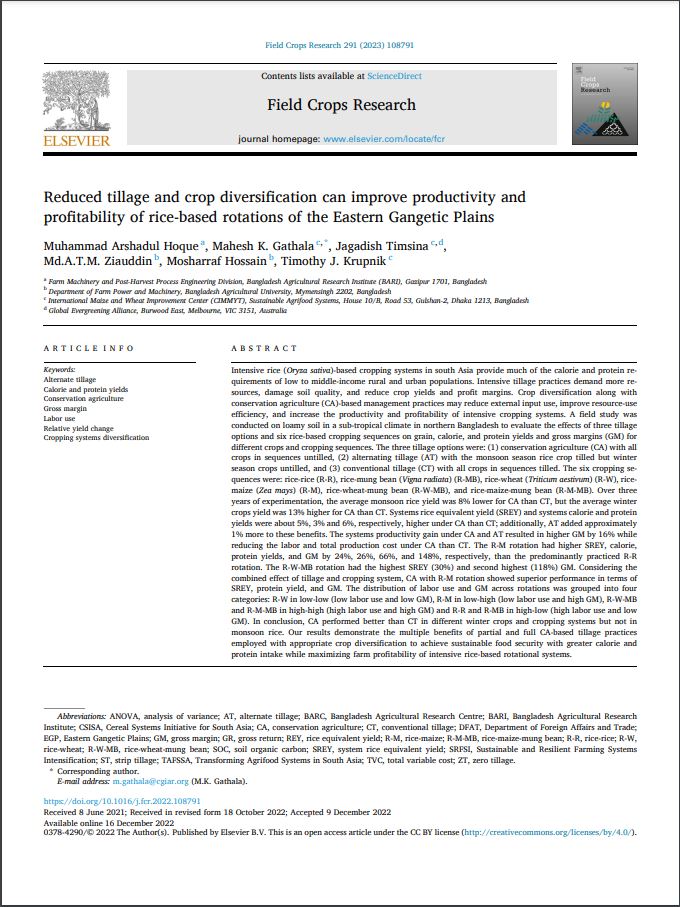Intensive rice (Oryza sativa)-based cropping systems in south Asia provide much of the calorie and protein requirements of low to middle-income rural and urban populations. Intensive tillage practices demand more resources, damage soil quality, and reduce crop yields and profit margins. Crop diversification along with conservation agriculture (CA)-based management practices may reduce external input use, improve resource-use efficiency, and increase the productivity and profitability of intensive cropping systems. A field study was conducted on loamy soil in a sub-tropical climate in northern Bangladesh to evaluate the effects of three tillage options and six rice-based cropping sequences on grain, calorie, and protein yields and gross margins (GM) for different crops and cropping sequences. The three tillage options were: (1) conservation agriculture (CA) with all crops in sequences untilled, (2) alternating tillage (AT) with the monsoon season rice crop tilled but winter season crops untilled, and (3) conventional tillage (CT) with all crops in sequences tilled. The six cropping sequences were: rice-rice (R-R), rice-mung bean (Vigna radiata) (R-MB), rice-wheat (Triticum aestivum) (R-W), rice-maize (Zea mays) (R-M), rice-wheat-mung bean (R-W-MB), and rice-maize-mung bean (R-M-MB). Over three years of experimentation, the average monsoon rice yield was 8% lower for CA than CT, but the average winter crops yield was 13% higher for CA than CT. Systems rice equivalent yield (SREY) and systems calorie and protein yields were about 5%, 3% and 6%, respectively, higher under CA than CT; additionally, AT added approximately 1% more to these benefits. The systems productivity gain under CA and AT resulted in higher GM by 16% while reducing the labor and total production cost under CA than CT. The R-M rotation had higher SREY, calorie, protein yields, and GM by 24%, 26%, 66%, and 148%, respectively, than the predominantly practiced R-R rotation. The R-W-MB rotation had the highest SREY (30%) and second highest (118%) GM. Considering the combined effect of tillage and cropping system, CA with R-M rotation showed superior performance in terms of SREY, protein yield, and GM. The distribution of labor use and GM across rotations was grouped into four categories: R-W in low-low (low labor use and low GM), R-M in low-high (low labor use and high GM), R-W-MB and R-M-MB in high-high (high labor use and high GM) and R-R and R-MB in high-low (high labor use and low GM). In conclusion, CA performed better than CT in different winter crops and cropping systems but not in monsoon rice. Our results demonstrate the multiple benefits of partial and full CA-based tillage practices employed with appropriate crop diversification to achieve sustainable food security with greater calorie and protein intake while maximizing farm profitability of intensive rice-based rotational systems.

